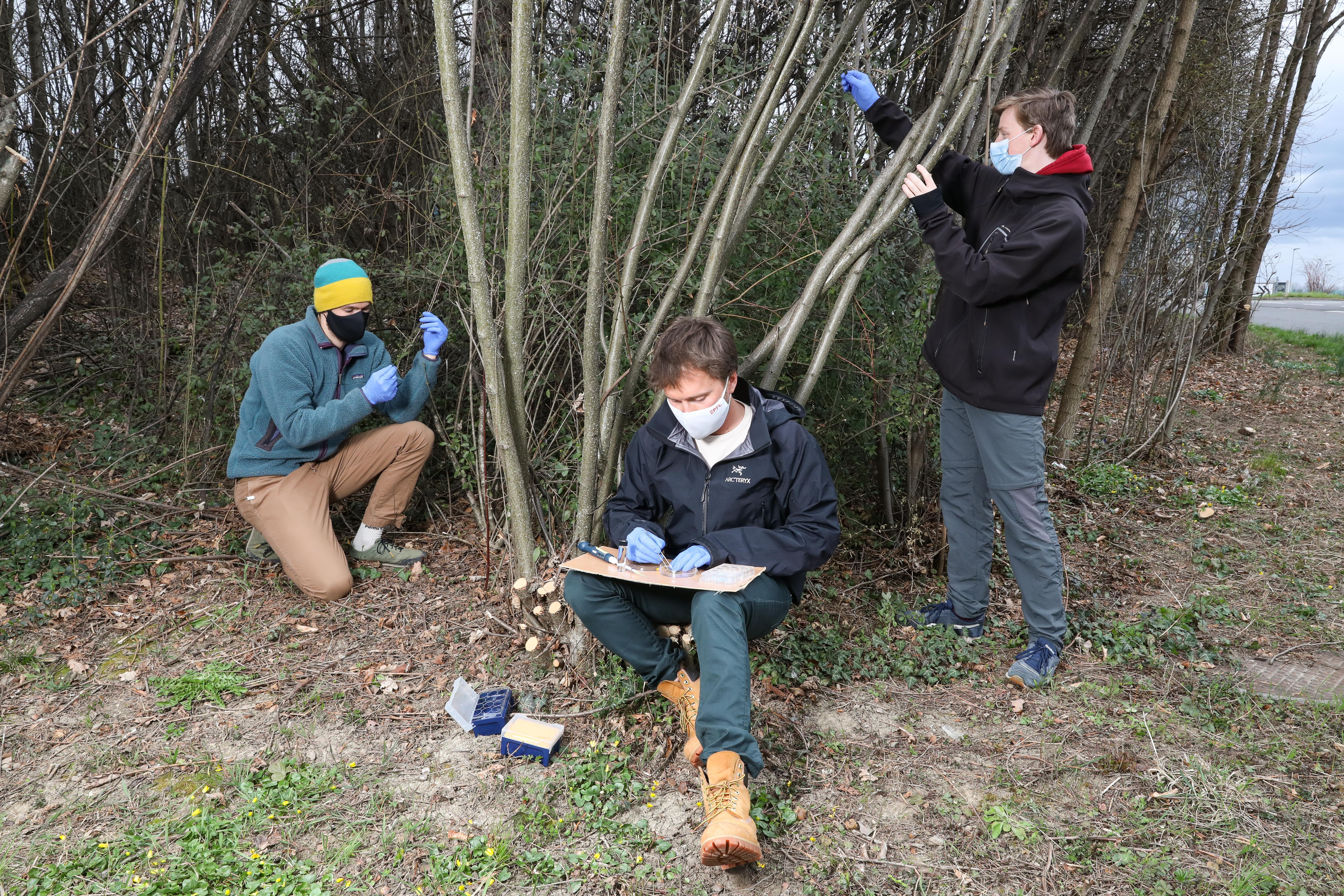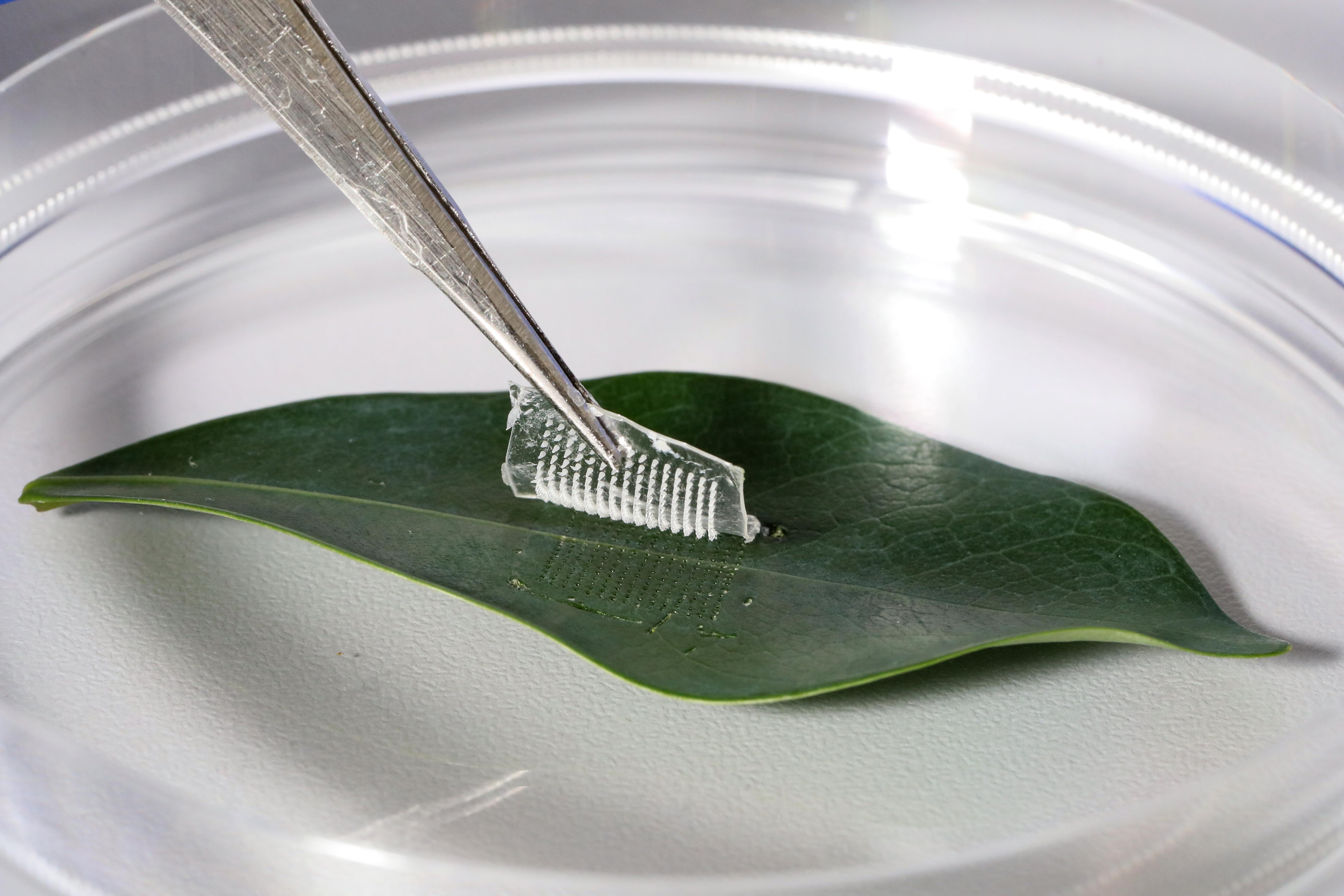GenoRobotics is an interdisciplinary EPFL project to develop a portable, automated device for extracting and sequencing DNA in any type of environment. The project team hopes their invention will make it easier and faster to map our planet's biodiversity.
Preserving the Earth's biodiversity is a crucial challenge. Biologists must be able to identify and categorize species around the world and study their environment in order to protect and sustain them. The problem is that current characterization methods take far too long relative to the pace at which climate change is affecting our ecosystems. And these methods can be hard to apply out in the field, especially in remote areas that are disconnected - in every sense of the word.
To help solve this problem, two EPFL graduates - Nicolas Adam in microengineering and Jonathan Selz in robotics - launched GenoRobotics, a project to develop a robust, portable and automated device for extracting and sequencing plants' DNA samples directly in the field. Their project is being supported by EPFL through its interdisciplinary MAKE program. "GenoRobotics lets us combine our interest in science with our love of nature and the great outdoors," say Adam, who is a trained ski instructor, and Selz, an avid rock climber.

Two years is too long
The idea for GenoRobotics hatched three years ago after Adam and Selz met Sven Bürki, a Swiss biologist and assistant professor in evolutionary plant biology at Boise State University in Idaho. "It all started with a research expedition to Madagascar led by Sven to characterize lemur environments," says Adam. "The DNA samples collected during this expedition had to be sent back to the US for analysis. And since the shipment of living samples is subject to the Nagoya Protocol, sending them involved a lot of red tape - especially given the political climate in Madagascar. In the end two years went by between when the samples were collected and when they were analyzed in a lab.
Adam and Selz realized that these lengthy delays were incompatible with the urgency that's needed to preserve biodiversity. They therefore started brainstorming ideas for how DNA analyses could be performed in the field - not just to prevent scientists from having to ship samples across borders, but also because a portable lab "would let scientists take a second sample if it turned out they couldn't use the first one, or collect additional samples based on the results of their DNA sequencing, such as if they discovered a new species," says Selz.
As students, we don't always see the practical value of what we learn in class. But this project shows us how to apply theory to real-world problems.
In addition to Adam and Selz, the GenoRobotics project team includes five professors, three PhD students, and around 15 other EPFL students from various programs. The team is working specifically to develop technology for preparing samples for DNA sequencing and storing the data once collected. For the sequencing operation, "we plan to use the portable system developed by Oxford Nanopore Technologies," says Cyril Monette, a third-year microengineering student at EPFL who is in charge of designing the DNA quantification sensor. The project team also plans to use Oxford Nanopore's system for preparing the libraries that will be used to distinguish different DNA samples.
Hydrogel-based extraction
Extracting plant DNA can sometimes require up to 30 individual steps, which today are carried out manually. To get around that constraint, Adam and Selz settled on a special hydrogel that had already been used by the EPFL students who won the 2019 iGEM competition. "The hydrogel contains tiny needles some 800 µm long and was initially designed for use in administering vaccines," explains Adam. "All you have to do is press on a patch containing the hydrogel to attract DNA strands. Our tests show that strands obtained this way are pure enough and concentrated enough to perform DNA barcoding. And to prevent the samples from becoming contaminated as they're extracted, we're developing a new mechanism that works like a stapler."

Once the strands are collected, the next step is to quantify the DNA. In the GenoRobotics device, this will be done using a miniaturized spectrophotometer - a common type of instrument that works by measuring how the DNA-containing molecules absorb UV rays. "The hard part is making sure you have enough genetic material after the quantification process," says Monette. The EPFL students on the project are building a proof-of-concept prototype that they'll test this summer during a research expedition in the Jura Mountains.
And when it comes to making copies of DNA samples, the GenoRobotics engineers are exploring alternative methods to PCR, which involves repeated heating-and-cooling cycles that consume a lot of energy. "We're looking into an isothermal method called recombinase polymerase amplification, which uses enzymes and is carried out at 37°C," say Adam and Selz.
Another element of their project involves developing a database for collecting and tracing data easily under field conditions - where internet connections are often unavailable and power supplies are unreliable. The idea is for the GenoRobotics database to interface with the existing iBOL and GenBank databases. "Depending on the sample, sequencing an entire genome can require dozens of gigabytes of memory. That's why we plan to use DNA barcoding, since it only involves short segments of DNA - a single gene can allow us to distinguish between two species. We plan to divide our database up into sections for different countries for subsequent downloading," say Adam and Selz.
Analyzing water and soil samples, too
In addition to a portable DNA measurement device for plants, the GenoRobotics team is developing one for water samples, in association with the LéXPLORE floating laboratory. "DNA strands tend to be highly diluted in water, so we had to find a way to concentrate them" says Adam. "We're currently designing a pump-and-filter system that uses polymers to accumulate the organic matter so that the DNA can be extracted." The project team also plans to design a portable device for soil samples and microorganisms, and to that end has already formed a partnership with the Geneva Natural History Museum.
"As students, we don't always see the practical value of what we learn in class," says Monette. "But this project shows us how to apply theory to real-world problems. And because we work with scientists and engineers from a variety of fields, we also learn methods from other disciplines. For example, I had to study biological mechanisms to be able to evaluate different possible methods for our DNA quantification sensor and select the right one. It was a huge challenge."
In addition to applying their own expertise, the team members are picking up a number of career-boosting skills as part of the GenoRobotics project. These include how to "speak the language" of other sciences, collaborate with the private sector, negotiate with manufacturers and find project partners. And Adam and Selz are looking to expand their team: "It's a great opportunity to put engineering to work for the environment. It brings together people from many different backgrounds, and we're offering a variety of opportunities to develop concrete applications."






